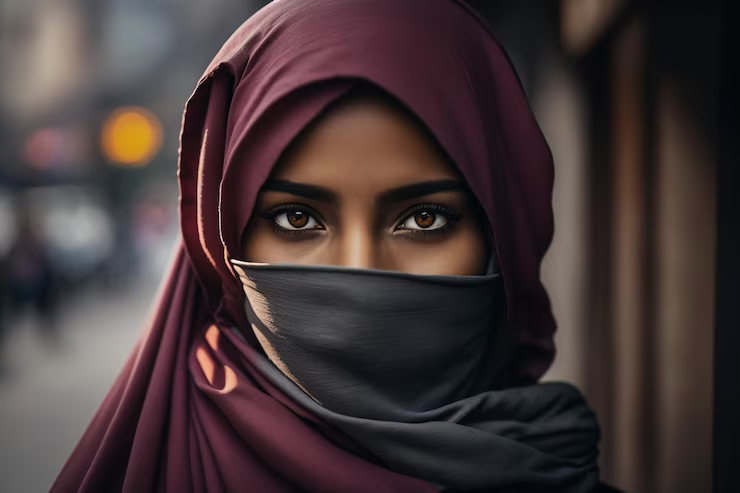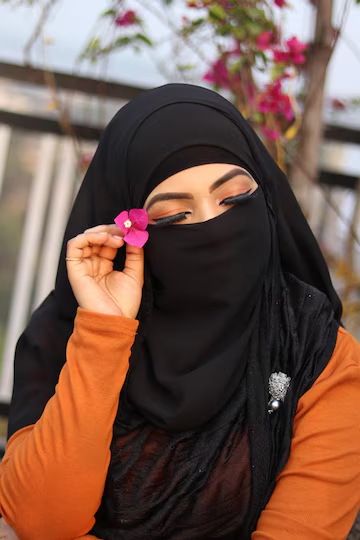In a world where fashion constantly evolves, the hijab remains a timeless expression of faith and identity for many Muslim women. Yet, as trends shift, so do interpretations and styles, giving rise to new concepts like “hijabhoojup.” This post explores the intersection of tradition and innovation, highlighting the significance of hijabhoojup in the realm of modest fashion. Whether you’re a fashion enthusiast, a modest clothing wearer, or someone simply curious about emerging trends, this guide is your all-access pass to the hijabhoojup phenomenon.
A Journey Through Time The Hijab’s Historical Tapestry
The hijab has long been a symbol of religious devotion and cultural identity within the Muslim community. It represents a commitment to modesty and spiritual values, transcending mere fashion statement. Originating in the early Islamic period, the hijab has evolved through centuries, adapting to geographical and cultural nuances. Its significance lies not only in its religious connotation but also in its representation of a woman’s choice and empowerment in many contexts.
Recently, the traditional hijab has encountered a fresh wave of transformation known as hijabhoojup. This emerging trend encapsulates more than just a style; it embodies the fusion of cultural richness with contemporary fashion dynamics. The rise of hijabhoojup speaks volumes about the adaptability and resilience of modest fashion amidst a rapidly changing fashion landscape.
Understanding Hijabhoojup A New Fashion Revolution
Hijabhoojup is a term that encapsulates an innovative take on traditional hijab styles, blending them seamlessly with modern fashion elements. Unlike conventional hijab styles that focus solely on covering, hijabhoojup reimagines the hijab as a versatile accessory that can be intricately styled to align with various fashion aesthetics. It’s a bridge between cultural heritage and Western fashion trends, enabling Muslim women to express their individuality while maintaining modesty.
Comparing hijabhoojup to traditional hijab, one notices a distinct emphasis on creativity and personalization. While the traditional hijab focuses on coverage and simplicity, hijabhoojup introduces layers, textures, and colors, allowing wearers to experiment and make bold fashion statements. In many ways, it mirrors Western fashion’s freedom of expression, yet it remains rooted in the principles of modesty.
Style Guide Dress to Impress with Hijabhoojup
Incorporating hijabhoojup into daily wear is an exciting endeavor, offering endless possibilities for creativity and self-expression. For those looking to explore this trend, the key lies in selecting hijab styles that complement your outfit and occasion. Opt for fabrics that drape beautifully and colors that resonate with your personal style. Consider lightweight materials for casual outings, while luxurious textures can elevate formal events.
Outfit ideas abound for those eager to experiment. Pair a flowy hijabhoojup with a chic maxi dress for a casual day out, or opt for a structured hijab with tailored blazers for a professional look. For evenings, experiment with embellished hijabs that add a touch of glamour to your ensemble. Remember, hijabhoojup thrives on versatility—mix and match to create unique looks tailored for various occasions.
The Ripple Effects The Influence of Hijabhoojup on Modest Fashion
The rise of hijabhoojup has undeniably left an indelible mark on the modest fashion industry. Fashion designers and brands have embraced this trend, incorporating hijabhoojup-inspired elements into their collections. This shift has not only diversified the offerings in modest fashion but has also challenged traditional perceptions, encouraging a more inclusive approach to style.
Insights from prominent hijab fashion influencers and designers shed light on this trend’s impact. Influencers, with their significant social media following, have become pivotal in promoting hijabhoojup by showcasing innovative styles and providing inspiration to thousands of women worldwide. Designers, on the other hand, are creating collections that celebrate the fusion of modern aesthetics with cultural heritage, ensuring hijabhoojup garners global recognition.
Beyond Fashion The Social and Cultural Significance of Hijabhoojup

Hijabhoojup extends beyond the realm of fashion; it serves as a powerful cultural statement for many Muslim women. It allows individuals to celebrate their cultural identity while navigating societies that may not fully understand their practices. By choosing hijabhoojup, women are able to assert their presence and challenge stereotypes, fostering a dialogue around diversity and acceptance.
Personal stories and experiences from community members highlight the profound impact of hijabhoojup. For many, it represents a sense of belonging and empowerment, a way to express individuality without compromising their beliefs. Stories of women finding confidence and strength through their unique hijabhoojup styles resonate deeply, inspiring others to explore this trend and redefine their own fashion narratives.
Gazing Ahead The Future of Hijabhoojup
The future of hijabhoojup looks promising, with its influence continuing to grow within the fashion industry and beyond. As designers push boundaries and consumers demand more innovative options, hijabhoojup is poised to become a staple in both modest and mainstream fashion. Its ability to bridge cultural divides and foster inclusivity makes it a trend with staying power.
Looking ahead, trends suggest that hijabhoojup will evolve dynamically, incorporating cutting-edge technologies and sustainable practices. Imagine hijabs made from eco-friendly materials or designs that blend tradition with futuristic aesthetics. The possibilities are endless, inviting fashion enthusiasts and modest clothing wearers alike to contribute to this ongoing evolution.
In Conclusion
The emergence of hijabhoojup marks a significant milestone in the world of modest fashion, offering a harmonious blend of tradition and modernity. For Muslim women and fashion enthusiasts, it represents a canvas for creativity, enabling them to express personal style while staying true to their values. In a world where diversity and individuality are celebrated, hijabhoojup stands as a testament to the power of fashion to transcend cultural boundaries.

